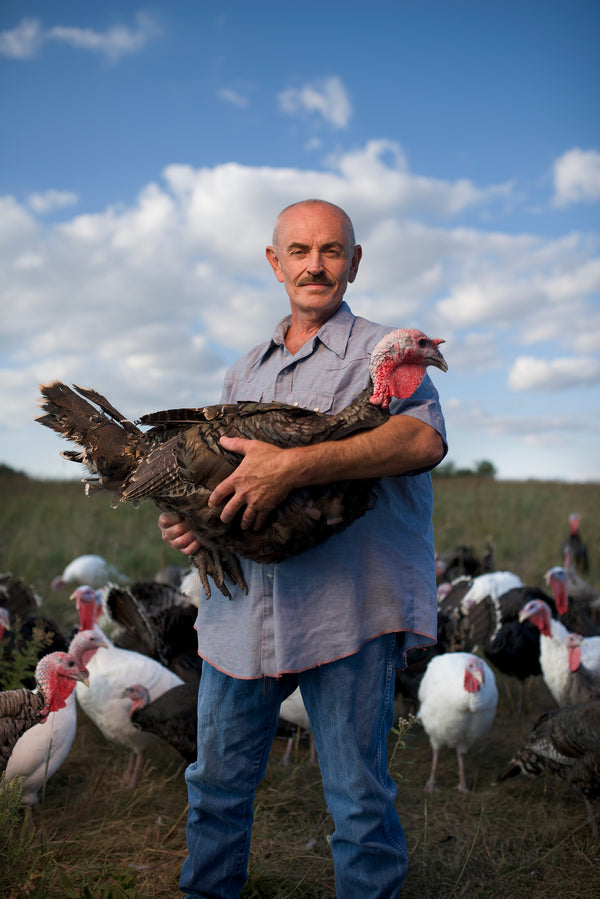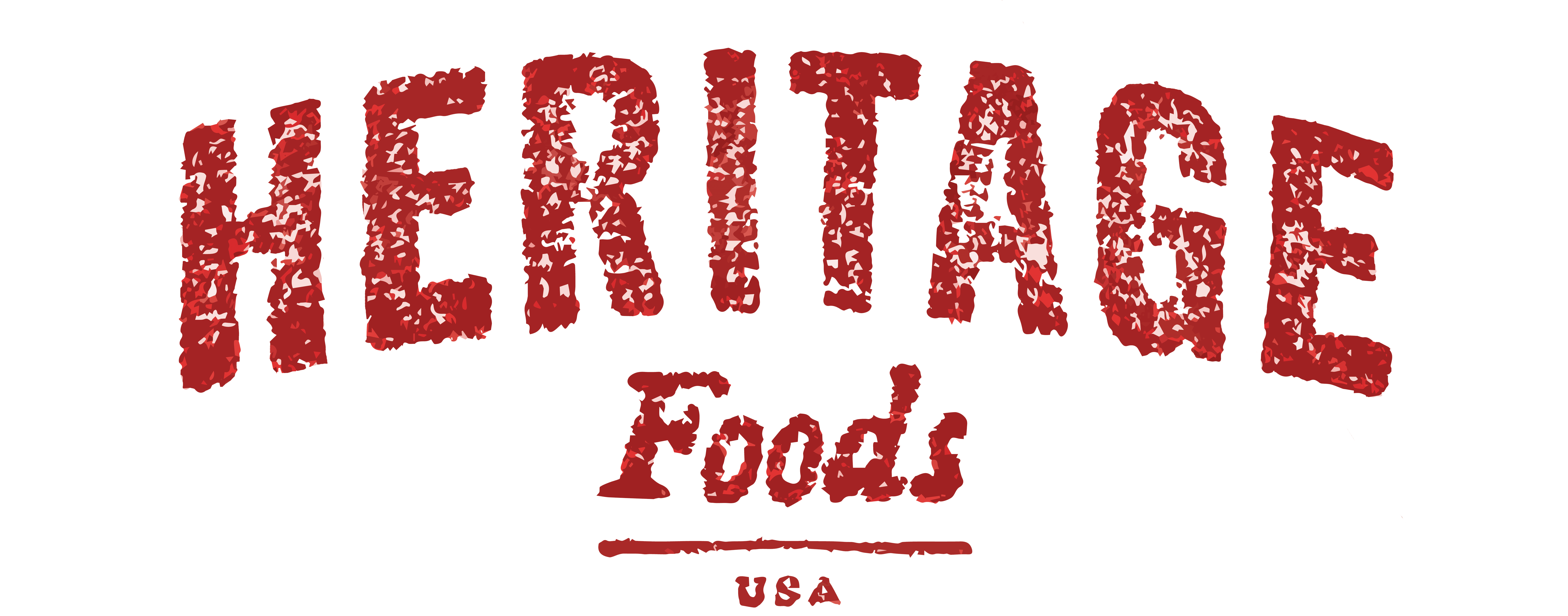
Frank Reese’s Turkeys Are Getting Hot by Derek Hawkins
Frank Reese’s turkeys are getting hot.
The heat index at Reese’s Good Shepherd Poultry Ranch in Lindsborg, Kansas, is climbing toward 105 degrees, and the August sun is beating down on the yard where the birds spend their days.
If this were a large commercial farm, he’d just crank up the air conditioning. But there aren’t any climate-controlled warehouses here. Reese’s turkeys wander freely around the 160-acre property.
So how do they keep from getting scorched on an afternoon like this?
“They go up in the trees,” Reese says. “Because they’re not morbidly obese, they can handle the extreme weather. If you were to put an athlete in this weather and you were to put someone who weighs 500 pounds, you can imagine who’s going to last.”
Reese’s birds — which also include chickens, ducks, geese and guineas — are all “heritage” breeds, certified by poultry judges as standard-bred, meaning they come from genetic lines that stretch back before the the boom in factory farming during the 1950s. Physically, they’re a world apart from the poultry found in supermarkets. They’re lean, active and slow-growing — athletic, indeed, compared to industrial birds that are bred to develop breast meat so heavy they can’t even mate on their own, much less flutter 10 feet into the branches of an elm.
But it’s getting more complicated for farmers like Reese to explain to the public what makes their heritage breeds special — and why they’re worth saving.
A recent surge of interest in heritage meats has offered something of a mixed blessing: Business is growing, but more producers are seizing on the “heritage” label, even if their breeds have little in common with the birds on the Good Shepherd ranch. Reese and others worry “heritage” is already starting to lose its meaning.
“It’s sort of like the Black Angus beef movement. If the cow they drag into the processor plant is black and she’s only got a tint of Angus blood in her, they still call her that,” he says. “It’s very important to me that my customers know that they’re getting the real product, not a fake.”
A growing market — and a clash over labels
Heritage meats make up only a tiny fraction of overall meat sales in the United Sates, largely confined mainly to farmers’ markets, specialty stores and small distributors. But there are signs the market is expanding.
For two years running, the National Restaurant Association and the American Culinary Federation have identified heritage-breed meats as a top food trend in their survey of chefs nationwide. Heritage meats have also found loyalists in celebrity chefs like David Chang, founder of the Momofuku restaurant chain and the popular Netflix series “Ugly Delicious,” and superstar restauranteur Danny Meyer, founder of Shake Shack and Union Square Hospitality Group. The New York Times has taken note, too, calling Heritage Foods — a Brooklyn distributor that sells only heritage breeds — the company “at the forefront of the non-industrial meat movement.”
This success has been a long time in the making. It was set in motion two decades ago when the Livestock Conservancy, the nation’s leading organization dedicated to preserving historic livestock and poultry breeds, set to work on an official definition of what it means for meat to be deemed “heritage.”
Under the definition, heritage poultry must come from a breed recognized by the American Poultry Association (APA) before 1952 and must be certified by the organization as standard-bred. The bird must also be able to breed naturally, live a normal lifespan and reach market weight in no fewer than 16 weeks. The conservancy has issued similar definitions for swine and cattle.
A small community of farmers and boutique breeders have adhered closely to those standards ever since. And Reese’s operation is unique among them: he’s the only poultry producer of his kind in the United States whose flock consists entirely of breeds certified standard-bred by the APA. "That's what separates us from fake heritage," Reese says.
But there’s no government-sanctioned definition for what makes meat “heritage” — unlike, for example, the “organic” label, which is strictly defined by the U.S. Department of Agriculture. That means anyone is free to use it on their packaging and marketing materials, even if their breeds don’t tick every box in the Livestock Conservancy’s definition. Whole Foods, for example, has carried “heritage”-branded meats that lack APA certification for at least two years.
Farmers offer mixed views about whether it would help or hurt if the USDA were to step in and create a formal heritage designation. Such a move would open the door for large commercial producers to weigh in on the meaning, which could bring further complications.
Why ‘heritage’ matters
But distinguishing “true” heritage breeds from others is vitally important for farmers like Reese. And they point to several major concerns.
The first is preserving genetic diversity among the animals. The overwhelming majority of poultry produced in the United States comes from hybrid birds bred to gain prodigious amounts of weight in short timeframes. This has created an array of heath problems among those birds while pushing other slower-growing breeds to the brink of extinction. Keeping APA-certified heritage breeds alive gives farmers more genetic traits to choose from, allowing them to breed healthier animals that can adapt to different conditions, such as climate change or a disease outbreak. Fewer or less-pure genetic lines could erode that flexibility and, potentially, threaten the security of the food supply.
“With the heritage birds and old breeds, there’s so much genetic diversity you can pull from,” says Lisa Van Horn, a farmer from Peninsula Poultry Breeders, a group of farmers in northwest Washington that raises heritage breed chickens. “It helps you keep a healthier bird. You can breed lines that can adapt better to environmental pressures.”
“Mother nature hates monoculture,” adds Reese. “If you care about the Earth, disease control, the health of the animal, then this is the only way to go. When you buy certified heritage you’re saving these breeds, some of which have only a few hundred left breeding in the whole world.”
Recent research supports these assertions. In a May report, researchers from the University of Göttingen in Germany compiled a database of worldwide chicken breeds, called Synbreed, to study the effects of a loss of biodiversity. Maintaining highly diverse breeds is key for ensuring the long-term sustainability of poultry farming, the authors concluded. A loss of “valuable genetic material will put a strain on animal production and could make it vulnerable to challenges in the future,” they wrote. “It is therefore important to preserve genetic resources that may help to meet future demands in animal breeding.”
Good genetics aren’t the only thing heritage breeds have going for them. Research also shows that the type of small-scale farming practiced by heritage farmers is far more environmentally sustainable than factory farming, which contributes to greenhouse gas emissions, waterway pollution, deforestation and other environmental ills.
And there’s some evidence, though sparse, that heritage meat may be more nutritious than commodity meat. In one study by a Kansas State University researcher, meat from Reese’s heritage chickens was shown to have less than half as much fat and cholesterol as an equal serving of meat from organic factory-farmed chicken, and slightly more protein. Reese also says his poultry has tested for higher levels of omega 3 fatty acids, which have been shown to offer some health benefits.
‘People identify with it’
So how do heritage stalwarts convey all those things in a market awash in buzzwords like “farm raised,” “heirloom” and “all natural”?
“Education,” says Van Horn, of Peninsula Poultry Breeders. She and her fellow farmers host workshops and provide other resources for small-scale poultry producers who want to learn how to raise heritage chickens. Their goal is to bring back poultry production qualities that have been lost over the years and, eventually, convince local commercial farms to stop using factory birds.
“‘Heritage’ is a marketing term, initially, but I think people identify with it,” Van Horn says. “It has a value to it. It gives you those values that you’re talking about — longevity, history, those who came before.”
“It tells me what genetics are expected, what performance is expected,” adds Linda Hayes, another farmer from Peninsula. “They’re going to be what the animal used to be back before the commercial factories, when people had their own birds and did quite well with them.”
Reese also puts a premium on raising awareness. He’s setting up a conservancy of his own to educate farmers, chefs, students and the general public about how to raise and preserve heritage breeds. “The confusion,” he says, “just helps the factory farms.”
Derek Hawkins is a reporter based out of Brooklyn, N.Y., who reported this story on commission from Heritage Foods. His work has appeared in the Washington Post, the Boston Globe, the Chicago Tribune and other news outlets around the country. In 2016, he was part of a Washington Post team awarded the Pulitzer Prize for national reporting. He covers a range of topics, from criminal justice to national security to sustainability.
Photo Credit: Jim Richardson
